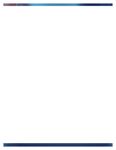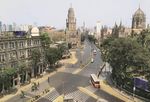JeffPost COVID-19 Issue - Thomas Jefferson University
←
→
Page content transcription
If your browser does not render page correctly, please read the page content below
JeffPost COVID-19 Issue
ISSUE 4 | May 2020 |
Making Hand Sanitizers in Lab, Dept. of Pharmaceutical Sciences
Desperate times call for desperate measures. Sounds too true when you
hear the story of Ms. Annie Chhun, who is a laboratory coordinator in
the Department of Pharmaceutical Sciences. In late January 2020, she
started trying to make gel hand sanitizer for home use as the COVID-19
crisis started. Soon thereafter, the commercial stock of sanitizers became
quite expensive or unavailable. As a follower of the Cambodia
community on Facebook, she learned that there was a shortage of
cleaning products, such as Lysol, ethanol, and hand sanitizers. Ms.
Chunn said, “Dr. Gagan and I were talking about it and thought since we
developed a formulation for PharmD students, can we make hand
sanitizers with whatever ingredients we have in the laboratory? This
question led us to develop a new formulation of easy-to-make hand
sanitizers from a few simple ingredients in the laboratory.”
To have an idea of the interest in this product, she posted the concept on
her Facebook page and shared it on the Cambodia community Facebook
page, writing in their Khmer language. One major reason behind this was
because of the economic issue, since not everyone can afford the hand
sanitizers as they had become way overpriced. Instead, it can be made
totally at home for less than 50% of the price and in larger quantities.
Following are ingredients of the preparation “homemade sanitizer:”
1. 70% IPA or high
2. 0.15% of HEC (Hydroxyl-ethanol)
3. 0.1-0.2% of Glycerin
4. Optional: essential oil and gel color of your choice
Cambodian Version: https://www.facebook.com/100002064106399/posts/2926544557424319/?d=n
English Version: https://www.facebook.com/100002064106399/posts/2926549880757120/?d=n
She has made seven batches (nearly 1 liter of preparation) so far in various scents like watermelon, orange, and
gardenia. She distributed the preparation within the laboratory to see if it works. She first shared with her
husband, then her colleagues, Miriam and Ankit, then others in the lab, and then Drs. Gagan Kaushal and Alok
Bhushan. The video of the preparation received over 500+ shares and >20k viewers. She instantly received
comments and discussions on the preparation. Common questions were about the possible substitutions for
ingredients, where can they find those raw ingredients, and how do they make specific dilutions. Recently, she
also made a video in English to reaching out to a bigger community. She hopes that people appreciate that small
efforts can provide help in a big crisis.
-Dr. Ankit K. Rochani (VP, Communication, JPA, and Editor-in-Chief, PSERT)Jefferson Fights Against COVID-19
Jefferson cares for its employees and students. The closing of the institute was ordered nearly 3 weeks before the US
saw a serious surge in positive cases. Figure 1 shows the time line of cases and actions taken by Jefferson to contain
the crisis for students, postdocs, and faculty members.
289,987 Cases:
• Plasma transfusion from COVID-19
recovered patient as possible
2664 cases treatment
• Official Work from home • Jeff secure (short term) financial
orders and all classes assistance for students
moved online
• Testing guidelines issued
• Employee COVID
exposure guidelines
663 cases 19092 cases 82,872 Cases: Entrances
Cancels all • Graduation were monitored for new
international and ceremonies admissions
domestic travels and postponed
all on campus events indefinitely • Call for donation of personal
protection equipment
• Use of Hydroxychloroquine
43199 cases: Mask wearing
compulsory
Figure 1: Shows number of COVID-19 cases over time for the US (as per Worldometer) and steps taken by Jefferson
over that same period to safeguard people working or studying at the organization.
Due to limited availability of masks and as per new Outpatient Guidelines
(https://www.jeffersonhealth.org/coronavirus-covid-19.html?utm_source=cv19banner), Jefferson is also providing
necessary masks to patient visitors to prevent the spread of infection. As of April 22, there are 26 testing centers and
drive-through testing sites; details are given in the weblink. Currently there are >400 confirmed cases being treated at
Jefferson Hospital. Jefferson follows CDC, NIH, and Local authority guidelines for helping people cope with the
situation.
COVID-19 test utilizes real time reverse transcription polymerase chain reaction (rRT-PCR_ methodology) and is
done using respiratory samples that can be obtained via a nasopharyngeal swab or sputum sample. The results from the
test are available anywhere from a few hours to 2 days. Jefferson currently utilizes the PCR-based diagnostic test in
the hospital as well as all of its mobile testing units. For COVID-19 related information specific to Jefferson refer to:
www.jefferson.edu/coronavirus (by Dr. Nikita, PSERT Editor)
In other Philadelphia hospitals, physicians are carefully evaluating which elective procedures should be deferred to a
later time. In addition, conservation strategies are in place for isolation gowns because of the ongoing critical shortage
in personal protective equipment (PPE). Staff required for intubation procedures or procedures that involve generation
of aerosols must wear appropriate PPE – N95 respiratory/PAPR, eye protection, gown, and gloves. Current treatments
include hydroxychloroquine, Tocilizumab, and Remdesivir, depending on the severity of disease (by Lauren Springer,
PhD candidate, Jefferson College of Life Sciences).
JeffPost | 2Philly In Lockdown
Over a million cases in USA and >40,000 cases in
Pennsylvania. It is like living in the plot of the Contagion
movie. Photos of empty streets of Philly in Lockdown. The
Sakura (cherry blossom) season has come and gone but
people continue to live in the grip of crisis. The lockdown
situation has changed their lifestyle and affected people
physically and mentally. The empty streets were prefaced
by a rush to gather food stuff that was quite chaotic and
challenging to adapt to for everyone. The Stay Home order
and social distancing may be working. After all the
restrictions, currently there are > 12,000 confirmed cases in
Philly, and >400 deaths, with an exponential rise in cases.
COVID-19 Situation in China
When things were settling down in China after 2 months of lockdown, one of our JPA EB members (Dr. Xi Chen)
let us know the experiences she heard among the community/family back in China. The new cases in China are
monitored and were reported to be from people who travel to China from abroad. The government is very strict with
people who recently traveled abroad. Those people need to be quarantined at the place of arrival for 14 days, and
then travel to other provinces later. Most of the healthcare providers who volunteered to help in Wuhan are back to
their hometowns. Overall, life is gradually returning back to normal. People have been back to work for a while and
restaurants are reopening. School is kept in an online form. But I hear that people are still not willing to shop in the
supermarkets or eat in the restaurants, out of concern for virus transmission. On buses, passengers are required to sit
with one seat in between and crowds are not allowed. Each Chinese citizen has their personal ID information
registered and transferred as QR code in either their cell phone or elsewhere. Wherever they go publicly, like
supermarkets or buses, they need to scan this code when entering.
COVID-19 broke out during the spring festival of China when there was 7-day official holiday nationwide. In China
during the time of WFH, there was a saying spreading that, “Staying at home is a contribution for the community
and the country.”
JeffPost | 3In my community in China during the past month, each family was allowed to have one person go out of the
community every other day for essential needs, like grocery shopping. I believe that the lockdown of Wuhan and
essential cities helped to control the virus outbreak in China.
One big issue I want to share is the lack of wearing face masks in the US. Their absence has been perplexing for
most Chinese in the US during the pandemic. It is mandatory for every person in China to wear a face mask if they
step out of their house during this time. In the past one month, China had a great need for masks. One of my relatives
wanted me to help buy a large number of N-95 masks from the U.S. to donate to the hospitals in Wuhan even though
the price was $10 each on Amazon (out of stock though). In China, wearing face masks is a part of a culture or
concept to protect yourself from airborne diseases. It is very common for Chinese to wear masks in public areas,
even to protect from wind in winter in general. But in the US, it is a completely different concept. People think that
you wear a mask only when you are sick. I personally wanted to wear masks earlier, before the outbreak of COVID-
19 in the US. Out of concern for my personal safety and fear of being attacked, I did not wear a mask in the
supermarket, subway, or buses. Being Chinese, this is very puzzling for me. Only these days, when the situation is
worse, have I started seeing Americans wearing masks when they are out. This eases my mind a lot about wearing
face masks outside.
After long time of lockdown, China has started opening schools, restaurants, and other businesses. This gentle liberty
comes with strict social distancing rules and tracking people for their temperatures and disease condition.
-Dr. Xi Chen (VP Career Development, JPA)
India COVID-19 Experience
The recent COVID-19 pandemic has struck a blow to the health care
systems of nearly all countries of the world, bringing developed as
well as developing countries to their knees. The first COVID-19 case
in the US was reported on January 21, 2020, and since then the US
currently has over 1,000,000 positive cases. Similarly, the first
COVID-19 positive case in India was reported on January 30, 2020,
and currently India has approximately 30,000 positive cases. India
shares a land border with China and also a land-based trade route, yet
it has managed to control the spread of infection. The burning
question now is what has the Indian government done differently to
contain the spread. The Federal government in India followed the
situation in China closely. As part of its initial containment policy,
the Indian government followed suit of many other countries and set
up mandatory health checkups at its major international airports for
all travelers from countries which had already suffered major
outbreaks. All travelers arriving from nations affected by COVID-19
were asked to self-quarantine for a period of 14 days. The central and
state governments in India worked together to announce and
implement a nationwide lockdown, including state borders, for a
period of 21 days (until April 14th)
JeffPost | 4with the possibility of further extension until April 30th. It has now been extended until May 3rd. Furthermore, states
in India that emerged as COVID-19 hotspots declared an emergency situation, allowing no more than 4 people to
gather together in any public area. The lockdown was applicable to all non-essential businesses, but essential
businesses, such as hospitals, grocery stores, and pharmacies remain open. However, social distancing is strongly
recommended at all points of business. Additionally, the lockdown has also been applicable to inter-state buses, trains,
and domestic and international flights, unless they have been granted permission by the state or central government.
The central and state governments worked quickly to convert large hospitals into COVID-19 hospitals and started
working with laboratories and institutions in India as well as across the globe to build alternatives to ventilators and
masks. For the daily wage earners, who constitute approximately 20-30% of the nation’s population, economic
sanctions were quickly announced. Moreover, the authorities worked with non-profit organizations to provide
groceries and food to all those in need. In addition to this, further rebates were announced by the Ministry of Finance
regarding loans and mortgages.
As the number of patients in India continues to rise over the next few weeks, we will be able to see if the early complete
lockdown and strict quarantine measures help the country avert a major health problem.
-Dr. Nikita (PSERT Editor)
Technology to Support and Help Fight COVID-19
The US is the most hard-hit country of the world for COVID-19. There are a number of apps, database landscapes,
and technological advancements currently available for researchers and the general population:
1. State and county wide maps for COVID-19cases distribution. It also shows number of hospitalizations, on
ventilations or ECMO therapies
https://www.arcgis.com/apps/opsdashboard/index.html#
/85054b06472e4208b02285b8557f24cf
2. mContain (funded by NIH) mobile app for checking
if the individual was in contact with a COVID-19
patient. https://mcontain.md2k.org/
3. Healthlyned COVID-19Tracker: https://apps.apple.com/us/app/healthlynked-covid-19-tracker/id1500575377
4. Aarogya Setu (by Indian government): https://www.mygov.in/aarogya-setu-app/
5. COVID-19 app: https://www.apple.com/covid19
JeffPost | 5Kudos to Jefferson Hospital Nurses
Call for Stories for JeffPost
Graduate students, PIs, postdocs interested in showcasing the following should contact the JPA:
-Technologies or Services in labs at Jefferson for postdocs and the research community at Jefferson
-Research stories from Jefferson laboratories
-Articles related to Jefferson’s actions associated with improving the life of postdocs and students
Acknowledgments: JPA Board members for sharing data and Contact: Ankit Rochani, PhD
executing all the events. Dr. Lisa Kozlowski, Office of VP Communication, JPA
Postdoctoral Affairs, and Pamela Walter, OPWPC, for Thomas Jefferson University
editing this issue.
Email: jpa@jefferson.edu
JeffPost | 6You can also read



























































